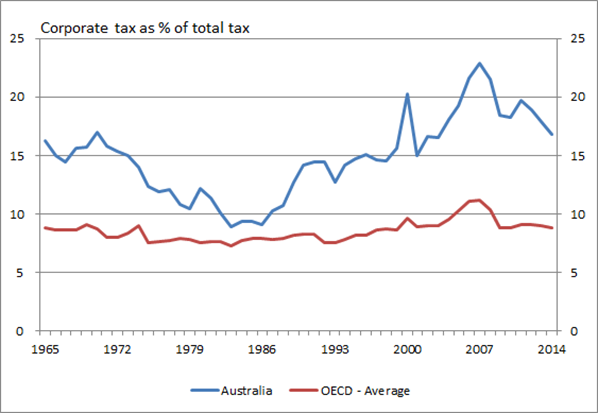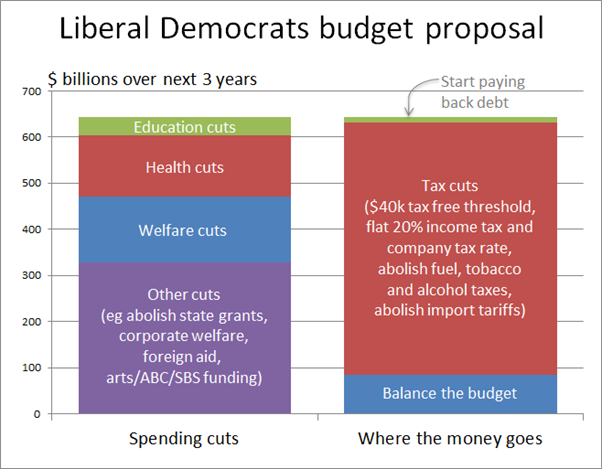Once the Government comes to a view on the spending in each area, it would be up to individual Ministers having responsibility in those areas to negotiate with each other as to how that spending is allocated. This is how the budget in New Zealand is created, and it works well.
After setting its target size of government, the Government should also come to a view on the appropriate share of revenue from various taxes. Corporate taxes have risen from 9 per cent of total tax in the mid-1980s to more than 16 per cent now, one of the highest corporate tax shares in the developed world. Even if the Government were comfortable with targeting a share of corporate taxation around this level, such a commitment would counter the hysterical calls for even more tax on corporations investing in Australia.

Advertisement
Bottom-up budgeting
If you locked a group of people in a room and told them to come up with a range of spending programs and taxes that would best serve the nation, they would never come up with the dog’s breakfast that is our current Commonwealth Government.
No group of public policy experts would come close. Neither would the editors of Green Left Weekly or Quadrant. This is because current spending and taxation, rather than serving some coherent ideological purpose, is the result of waves of new programs that have been created and augmented year after year, often without proper scrutiny or regard for duplication, or with an end date.
This is how we end up with Commonwealth Government programs to fund yoga and poetry for public servants, Peruvian surfers in Peru, research into Tibetan philosophy, a Mary Poppins statue in Bowral, and a flagpole in Bathurst. It is how we fund someone to travel through the Middle East and come back to tell us that Islam is the most feminist religion in the world.
Even bigger bucks are spent on incentives for aborigines to stay in dysfunctional communities, on welfare for the rich, on denying water for farmers and then paying for their irrigation infrastructure, on subsidising renewables and then paying compensation for high energy costs, on an education department which has no teachers teaching students and a health department with no doctors treating patients.
It's also how we end up with 16 different tax rates on alcohol, when interest groups of all political persuasions favour a single rate. It is what leads to a cooked chicken being taxed differently from a frozen chicken. And it is what leads to the ‘simple’ income tax return form for individuals being 12 pages long, not including the voluminous instructions and tax return ‘supplements’.
Through bottom‑up budgeting, Ministers and public servants would be required to design and budget for each program they believe the nation needs, starting from scratch. Current programs not identified as sufficiently worthy would be slated for retirement.
Advertisement
The results of bottom-up budgeting would be different under different Governments. If I were in control, the result would be a government roughly half the size of the current one, as estimated by Parliamentary Budget Office costings (available at www.ldp.org.au and summarised in the chart). But regardless of who is in power, bottom-up budgeting would lead to decisions to abolish at least some of the unjustifiable programs currently soaking up taxpayer funds.

Overcoming resistance
There would inevitably be plenty of reasons the Government could manufacture for not applying a bottom-up approach with its upcoming budget, and for not seeking to abolish unjustified programs.
Discuss in our Forums
See what other readers are saying about this article!
Click here to read & post comments.
2 posts so far.